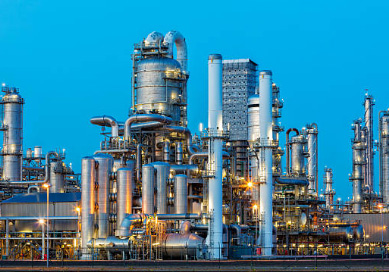
Polyethylene (PE)
- Low Density Polyethylene
- Linear Low Density Polyethylene
- High Molecular Weight Polyethylene
- High Density Polyethylene
- Metallocenes

Polypropylene (PP)
Polypropylene (PP) is a thermoplastic “addition polymer” made from the combination of propylene monomers. It is used in a variety of applications to include packaging for consumer products, plastic parts for various industries including the automotive industry, special devices like living hinges, and textiles.
Polypropylene is frequently used in manufacturing car batteries, bumpers, interior elements, and cladding. Packaging Material: Due to its low cost and flexibility, PP is used in various packaging forms and has replaced traditional materials such as paper, cellophane, and paper.
- Homopolymers
- Copolymers

Polyvinyl Chloride (PVC)
- Suspension
- Emulsion
- C-PVC

Polyethylene Terephthalate (PET)
- Bottle grade
- Sheet grade
- Fiber grade

Styrenics
Styrenics, also called styrenic polymers, are a family of plastic materials that use styrene as the main building block. In general, styrenics have an amorphous structure that makes them easy to process, making them ideal for a wide range of applications.
The major uses for styrene are in plastics, latex paints and coatings, synthetic rubbers, polyesters and styrene-alkyd coatings. The broad spectrum of uses of these products includes construction, packaging, automotive and household goods.
- General Purpose Polystyrene (GPPS)
- High Impact Polystyrene (HIPS)
- Expandable Polystyrene (EPS)
- Acrylonitrile Butadiene Styrene (ABS)

Chemicals & Petrochemicals
Petrochemicals are derived from various chemical compounds, mainly from hydrocarbons. These hydrocarbons are derived from crude oil and natural gas. Among the various fractions produced by distillation of crude oil, petroleum gases, naphtha, kerosene and gas oil are the main feed stocks for petrochemical industry
Petrochemicals products permeate the entire spectrum of daily use items and cover almost every sphere of life like clothing, housing, construction, furniture, automobiles, household items, agriculture, horticulture, irrigation, packaging, medical appliances, electronics and electrical etc. Chemicals and Petrochemicals is the most prominent business vertical for trade and distribution. We represent some of the renowned producers for distributing their products across the globe. We identify the needs of the producers and end customers and position ourselves to create value and open markets for them by offering our network and infrastructure for capitalization.

- Alcohols
- Aromatics
- Glycols / Glycol Ethers
- Ketones
- Plasticizers
- Chlor-Alkalies
- Monomers
- Fibre Intermediates
- Amines
- Acetates / Esters
- Oleochemicals
- Chlorinated Solvents
- Intermediates
- Olefins
- Phosphates
- Acids
Disclaimer: The information on applications of chemicals and/or their safety data is believed to be accurate and represents the best information currently available to us. However, we make no warranty of merchantability or any other warranty, express or implied, with respect to such information, and we assume no liability resulting from its use. Users should make their own investigations to determine the suitability of the information for their particular purposes. In no event shall the company be liable for any claims, losses, or damages of any third party or for lost profits or any special, indirect, incidental, consequential, or exemplary damages howsoever arising, even if the company has been advised of the possibility of such damages. Moreover, the specifications mentioned herein are for representational purpose only and are liable to change. User should check with the company for the latest specifications available.
